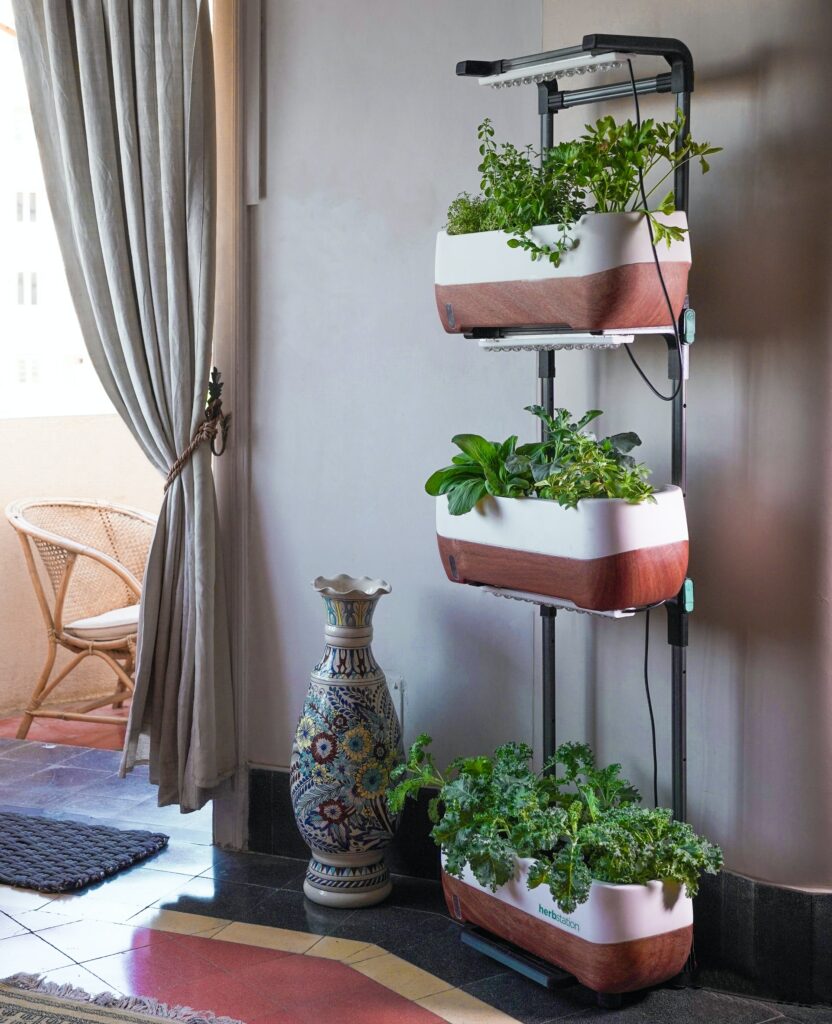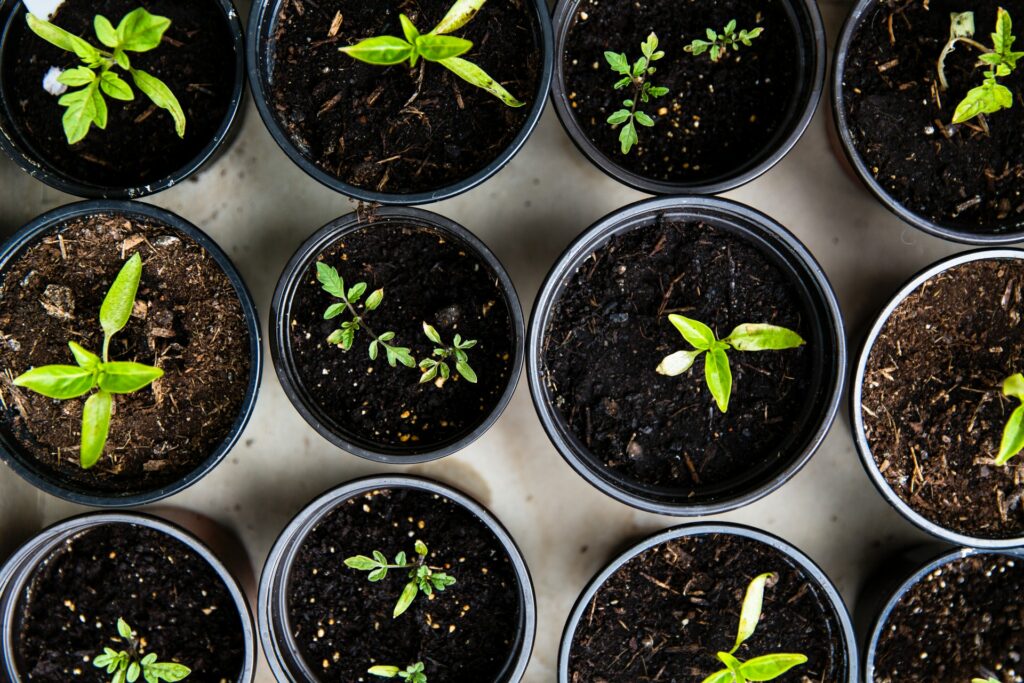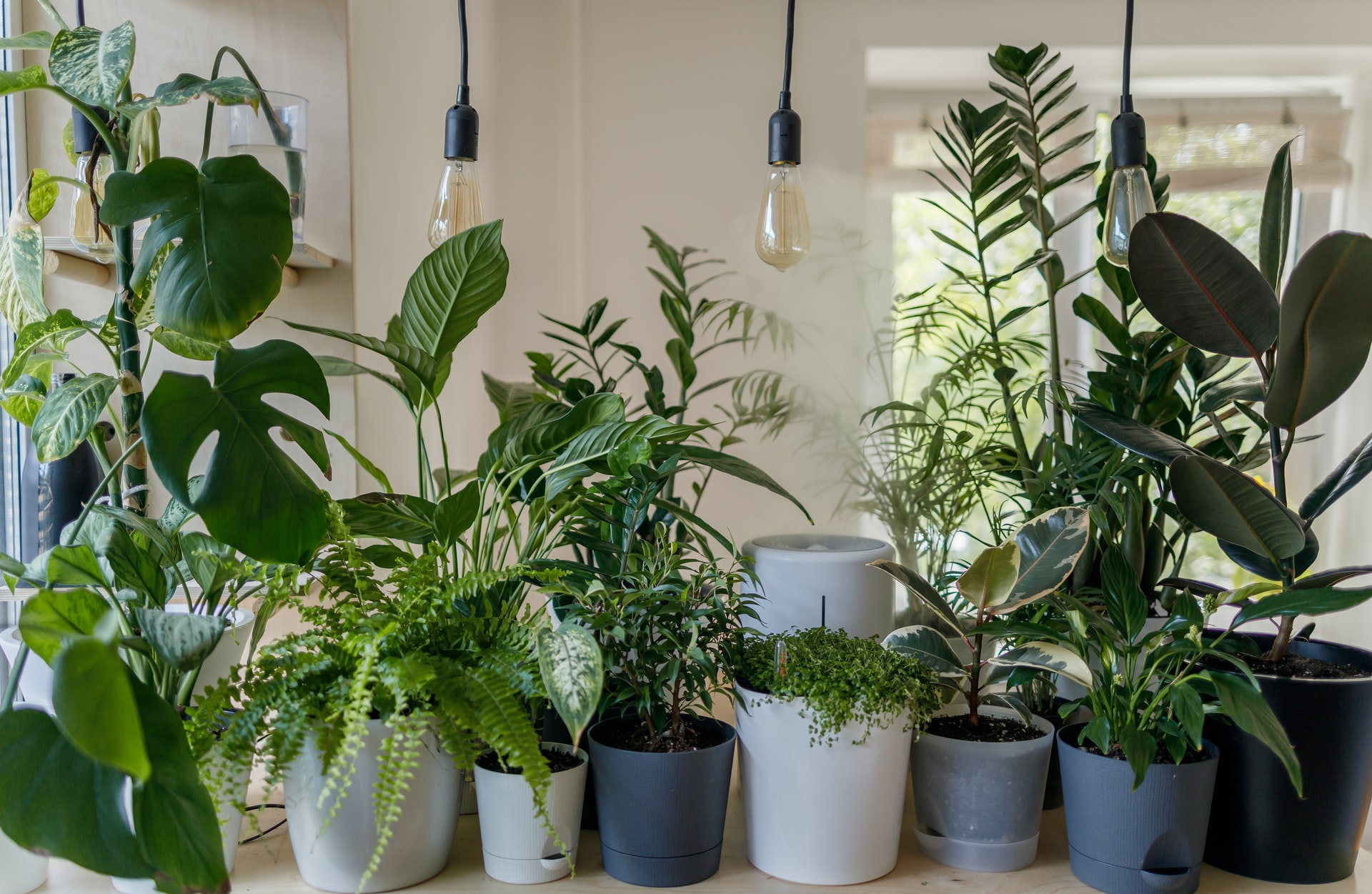People take to indoor gardening for a wide variety of reasons. Some want to try their hand at growing houseplants. Green plants, succulents and flowering plants add a beautiful touch to an indoor environment and decor.
For others, it’s growing one’s own food. An indoor garden is a good way to experiment with herbs, vegetables or fruit indoors before investing the time in an outdoor garden.
Health benefits of indoor gardening
Growing plants indoors has benefits for healthy living in several ways. For starters, tending to plants is known to reduce stress and be calming. Indoor gardening is also a great way to grow fresh fruit, vegetables and herbs right at home.
Some people live in climates with extremes where rainfall fluctuates too much or temperatures are too high or low. And, those live in an urban setting often don’t have the ability to have an outdoor garden. Health-minded parents garden indoors to teach their children about sustainability and where food comes from.
All of these are great reasons to consider an indoor garden.
Getting started
There are several considerations when you want to start gardening indoors. Are you doing this as a source of food? Is it going to be a fun hobby? Do you have room for a large garden or do you need to keep it small? Will your plants eventually end up outdoors or will you keep it as a a source of fresh herbs and vegetables?
There’s many questions when you are just getting started. We’ll cover a few here at a high level, and then provide more in this indoor gardening section of our site.
What can be grown in an indoor garden
- Aloe
- Beets
- Bush Beans
- Cacti
- Carrots
- Cherry tomatoes
- Flowers
- Garlic
- Herbs
- Kale
- Lavender
- Leeks
- Microgreens
- Peas
- Salad greens
- Scallions
- Spring radishes
- Spinach
- Sprouts
- Succulents
If you want to try indoor gardening but aren’t sure you want to spend much money look into growing with scraps. Celery, lettuce, bok choy, cabbage, garlic, onion and pepper cuttings can all be used for starting new plants.

Growing basil, oregano, sage, thyme, cilantro, chives, lemongrass and dill indoors provides an herb garden that can offer an endless supply of herbs as you snip off what you need and the plant continues to grow.
What plants need to grow indoors
Humans have basic needs for them to survive. Likewise, plants require:
- Adequate Light
- Air
- Water
- A source of nutrition (food)
- Space to live, grow and reproduce
- Optimal temperature
Light
Building your garden near a light source is important, but even direct indoor light will never be as strong as outdoor light. Modern windows are often tinted and some methods of tinting can block aspects of the light necessary for plants to thrive. But, there are some benefits of modern windows, too.
Plants require about six hours of direct sun. Placing your indoor garden in a south-facing window is the best possible location as far as natural sunlight goes. A plant that has insufficient light will get “leggy”, be weak and not be very productive. When a plant is leggy, it’s generally because it is receiving inadequate light. If your plant is getting insufficient light, it will grow tall as it seeks the light source, resulting in long stems on one side and a lack of growth on the other.
Tip: Indoor Lighting and Grow Lights
For best results consider using a grow light which will give full spectrum light for more ideal growing conditions. Incandescent lights do not provide the kind of light that plants need to thrive.
Fluorescent tube lights can be used but the preferred bulbs are LED grow lights which have a full range of color that will give you the best result. Plants, like humans, need to to be active part of the day and rest part of the day. For this reason, a timer is a good way to maximize the benefit of your grow lights
Air
Plants need air circulation. While they will receive some air movement naturally, putting a box fan on for several hours during the day will be greatly beneficial. Putting your fan on a timer, as well, would be one less thing to remember.
Water
Use a watering can to soak the soil until it runs all the way through the pot and comes out into a saucer you have placed underneath it. Wait for a bit then discard any remaining water. Plants need moisture to grown but too much can cause the roots to rot eventually.
Monitor your plants and water as needed but not necessarily on a strict schedule. Your plant’s water needs will vary depending on the time of year and how humid or dry your home is.

Plant’s root systems are reflected in their foliage. Water your plants evenly. If you only water on one side of the pot, the roots and leaves will gravitate to the water that’s available on that side. To keep your plants foliage full and healthy, water evenly all the way around the container.
Finally, when watering, avoid and direct the water onto the soil avoiding the leaves.
Food
There are various methods for growing plants:
- Hydroponics uses various nutrients to nourish plants instead of soil.
- Aeroponics is an advanced form of hydroponics which uses only water and nutrients.
- Aquaponics is the method of growing plans and fish together.
- Soil-based system.
A soil-based garden is the most traditional and also the most economical especially for the first-time indoor gardener. Hydroponics has become popular among indoor growers, too. Aeroponics and aquaponics are rarer.
If you opt for growing your indoor plans in soil, you will want to purchase potting soil at a nursery or garden supply. The soil from your backyard will likely have weeds and possible pests that you wouldn’t want to bring into your home. Purchased potting soil will have the nutrients in it that will get you off to a good start. It may cost a bit more but organic potting soil would be even better.
Space to live, grow and reproduce
One of your first decisions will be where to place your garden. If possible it would be a good idea to have it where it is visible from an area you are in often during the day, like your kitchen.
You will want to keep an eye on your plants to guard against yellowing or browning of the leaves or for possible pest infestations. The earlier you catch potential problems the easier it will be to resolve them. Until you are more confident you will want to check the soil for moisture often as too little or too much water will affect your results. Potted plants will dry out faster than ones in an outdoor garden.
Indoor gardens come in all sizes
Maybe the best part of indoor gardening is you can get started as small or big as you want right in your own living space. Have a small condo or apartment? You can utilize a windowsill or a sunny spot in your kitchen to get your indoor garden started. Even less space? Consider a terrarium.
For someone for whom space is not an issue, multiple larger containers or trays would provide a greater yield. You could also get seeds or seedlings started for placement outdoors when the weather permits if you’re already an old hand at outdoor gardening. For a small investment (or none at all) you can experience the joy of seeing nature at work!
Have multiple pots? Placing them near each other will add humidity as will having a container of water nearby. If humidity is a concern in general, put an indoor humidifier in the room your indoor garden is in.
If you are growing from seed, refer to the seed packaging for that plant’s water and light requirements. Likewise, if you buy your young plants from a nursery ask for instructions to follow. If you opt for plants instead of seeds, quarantining them before adding them to your garden is a good idea as they may have pests that are not visible.
Conclusion
Indoor gardening is enjoying a renewed popularity and for very good reasons. Controlling the temperature, moisture and light is manageable in an indoor space and the satisfaction of growing your own herbs, vegetables and fruit brings with it a great sense of accomplishment.
In most parts of the country the growing season is short either because of seemingly endless, long, cold winters or unrelenting hot summers. With indoor gardening you can grow year ’round. You do not need to wait until growing season to have fresh herbs and vegetables without going to the grocery store.
Imagine preparing a recipe and having fresh herbs at your fingertips or making a salad and harvesting your own microgreens, radishes, cherry tomatoes or peppers from your indoor garden.
With an indoor garden you don’t need to worry too much about pests or about or animals, like rabbits, munching on your backyard garden greens either.
Now it’s your turn
Now that you know that indoor gardening is easy, economical, good for your well-being and fun, why not get started on your indoor gardening journey! You can utilize containers and other supplies you already have, purchase the basics you are missing or you can even opt for an indoor gardening kit that will have all the things you need for your perfect indoor garden.
From just the basics to a system complete with timers, self-watering containers and grow lights you can find the perfect combination for your needs and your budget.
